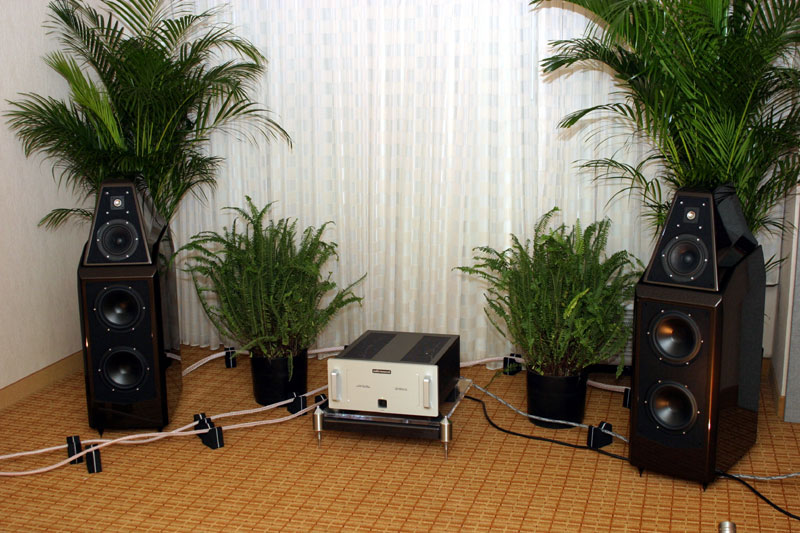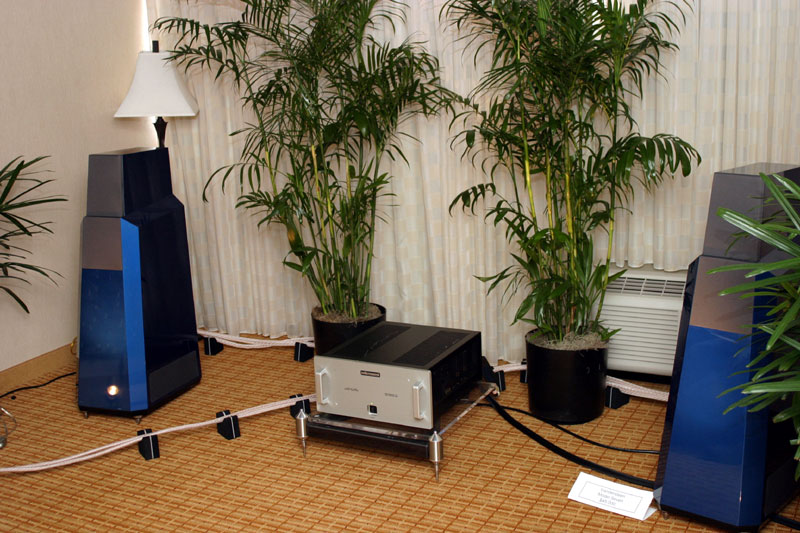RMAF 2009 - Blog
Audio Research and Shunyata Research, along with their Colorado-based dealer Audio Alternative, presented RMAFers with a rare and intriguing opportunity: to hear two nearly identical systems with two different high-profile speakers. Both systems used the same Audio Research Reference electronics -- Reference 110 amp ($9995), Reference 5 preamp ($12,000), Reference Phono 2 phono stage ($12,000) and Reference CD8 CD player ($9995). The interconnects, speaker cables and power cords were all from Shunyata Research, and the Linn turntables were duplicates. Most important, the rooms were identical in size and layout. However, in the spirit of full disclosure, I noted that the equipment racks were different, as were the phono cartridges. And, as you can see in the pictures, the foliage was different as well.
I was listening to the system with the Wilson Audio Sasha W/Ps ($26,950/pair) when The Great Blackout of '09 occurred. I went back again and heard the same things I did before the power went out: an utterly coherent presentation with abundant midrange texture and detail, powerful bass and soaring dynamics. The sound was fast but not over the top in this respect -- or any other. The speakers were well balanced and resolving, sounding rich and smooth with some recordings, light and open with others.
The Vandersteen Model 7's ($45,000/pair) powered bass section wasn't the cause of the greatest difference between it and the Sasha W/P. In fact, the differences throughout the sonic spectrum were so profound that I couldn't say one characteristic represented the greatest contrast. The presentation was lighter and brighter, with bass that had less bloomy purr and more quick-paced detail. The Model 7s delineated instrumental lines in a more overt way, often parsing the music into its constituent sonic parts in the process. The midrange had less presence than that of the Sasha W/Ps and very well may be the region that listeners point to when they pick one pair of these speakers over the other -- the Wilson Audio speakers portraying vocalists with greater in-the-room palpability, and the Vandersteen speakers seeming to lean toward that region's uppermost frequencies, at the cost of some natural vocal richness. There
you have it -- one listener, two very different speakers. As one manufacturer said to me
during the show, "Others do things their way. I design to please me." |


